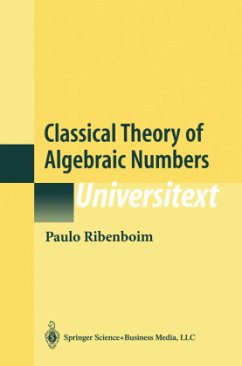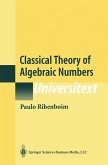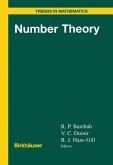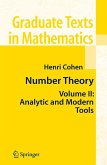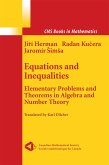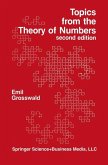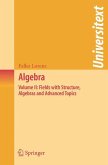Gauss created the theory of binary quadratic forms in "Disquisitiones Arithmeticae" and Kummer invented ideals and the theory of cyclotomic fields in his attempt to prove Fermat's Last Theorem. These were the starting points for the theory of algebraic numbers, developed in the classical papers of Dedekind, Dirichlet, Eisenstein, Hermite and many others. This theory, enriched with more recent contributions, is of basic importance in the study of diophantine equations and arithmetic algebraic geometry, including methods in cryptography. This book has a clear and thorough exposition of the classical theory of algebraic numbers, and contains a large number of exercises as well as worked out numerical examples. The Introduction is a recapitulation of results about principal ideal domains, unique factorization domains and commutative fields. Part One is devoted to residue classes and quadratic residues. In Part Two one finds the study of algebraic integers, ideals, units, class numbers, the theory of decomposition, inertia and ramification of ideals. Part Three is devoted to Kummer's theory of cyclomatic fields, and includes Bernoulli numbers and the proof of Fermat's Last Theorem for regular prime exponents. Finally, in Part Four, the emphasis is on analytical methods and it includes Dinchlet's Theorem on primes in arithmetic progressions, the theorem of Chebotarev and class number formulas. A careful study of this book will provide a solid background to the learning of more recent topics.
From the reviews of the second edition:
"This book is a thorough self-contained introduction to algebraic number theory. ... The book is aimed at graduate students. The author made a great effort to make the subject easier to understand. The proofs are very detailed, there are plenty of examples and there are exercises at the end of almost all chapters ... . The book contains a great amount of material, more than enough for a year-long course."
(Gábor Megyesi, Acta Scientiarum Mathematicarum, Vol. 69, 2003)
"There is a wealth of material in this book. The approach is very classical and global. ... the author keeps his presentation self-contained. The author has made a real effort to make the book accessible to students. Proofs are given in great detail, and there are many examples and exercises. The book would serve well as a text for a graduate course in classical algebraic number theory."
(Lawrence Washington, Mathematical Reviews, Issue 2002 e)
"Ribenboims's 'Classical Theory of Algebraic Numbers' is an introduction to algebraic number theory on an elementary level ... . Ribenboim's book is a well written introduction to classical algebraic number theory ... and the perfect textbook for students who need lots of examples."
(Franz Lemmermeyer, Zentralblatt MATH, Vol. 1082, 2006)
"This book is a thorough self-contained introduction to algebraic number theory. ... The book is aimed at graduate students. The author made a great effort to make the subject easier to understand. The proofs are very detailed, there are plenty of examples and there are exercises at the end of almost all chapters ... . The book contains a great amount of material, more than enough for a year-long course."
(Gábor Megyesi, Acta Scientiarum Mathematicarum, Vol. 69, 2003)
"There is a wealth of material in this book. The approach is very classical and global. ... the author keeps his presentation self-contained. The author has made a real effort to make the book accessible to students. Proofs are given in great detail, and there are many examples and exercises. The book would serve well as a text for a graduate course in classical algebraic number theory."
(Lawrence Washington, Mathematical Reviews, Issue 2002 e)
"Ribenboims's 'Classical Theory of Algebraic Numbers' is an introduction to algebraic number theory on an elementary level ... . Ribenboim's book is a well written introduction to classical algebraic number theory ... and the perfect textbook for students who need lots of examples."
(Franz Lemmermeyer, Zentralblatt MATH, Vol. 1082, 2006)

